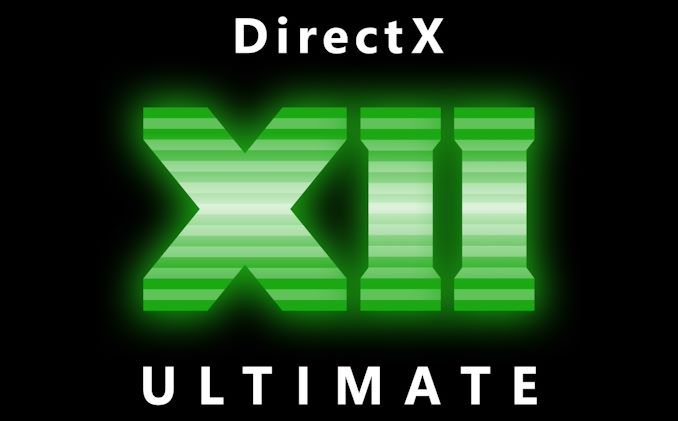The Intel Xe-LP GPU Architecture Deep Dive: Building Up The Next Generation
by Ryan Smith on August 13, 2020 9:00 AM EST- Posted in
- GPUs
- Intel
- Tiger Lake
- Xe
- Xe-LP
- DG1
- Intel Arch Day 2020
- SG1
Xe-LP Feature Set: DirectX FL 12_1 with Variable Rate Shading
Kicking off the proper part of our architectural deep dive, let’s start with a quick summary of Xe-LP’s graphics feature set. I call this a quick summary as there is unfortunately not a whole lot new to talk about here.
From an API-level perspective, Xe-LP’s feature set is going to be virtually identical to that of Intel’s Gen11 graphics. Not unlike AMD with their RDNA1 architecture, Intel has decided to concentrate their efforts on updating the low-level aspects of their GPU architecture, making numerous changes downstairs. As a result, relatively little has changed upstairs with regards to graphics features.
The net result is that Xe-LP is a DirectX feature level 12_1 accelerator, with a couple of added features. In particular, tier 1 variable rate shading, which was first introduced for Intel in their Gen11 hardware, is back again in Xe-LP. Though not as capable as the newer tier 2 implementation, it allows for basic VRS support, with games able to set it on a per-draw call basis. Notably, Intel remains the only vendor to support tier 1; AMD and NVIDIA have (or are) going straight to tier 2.
| DirectX 12 Feature Levels | ||||
| 12_2 (DX12 Ult.) |
12_1 | |||
| GPU Architectures | Intel: Xe-HPG? NVIDIA: Turing AMD: RDNA2 |
Intel: Gen9, Gen11, Xe-LP NVIDIA: Maxwell 2, Pascal AMD: Vega, RDNA (1) |
||
| Ray Tracing (DXR 1.1) |
Yes | No | ||
| Variable Rate Shading (Tier 2) |
Yes | No (Gen 11/Xe-LP: Tier 1) |
||
| Mesh Shaders | Yes | No | ||
| Sampler Feedback | Yes | No | ||
| Conservative Rasterization | Yes | Yes | ||
| Raster Order Views | Yes | Yes | ||
| Tiled Resources (Tier 2) |
Yes | Yes | ||
| Bindless Resources (Tier 2) |
Yes | Yes | ||
| Typed UAV Load | Yes | Yes | ||
The good news for Intel, at least, is that they were already somewhat ahead of the game with Gen11, shipping 12_1 support for even their slowest integrated GPUs before AMD had phased it into all of their products. So at this point, Intel is still at parity with other integrated graphics solutions, if not slightly ahead.
The downside is that it also means that Intel is the only hardware vendor launching a new GPU/architecture in 2020 without support for the next generation of features, which Microsoft & co are codifying as DirectX 12 Ultimate. The consumer-facing trade name for feature level 12_2, DirectX Ultimate incorporates support for variable rate shading tier 2, along with ray tracing, mesh shaders, and sampler feedback. And to be fair to Intel, expecting ray tracing in an integrated part in 2020 was always a bit too much of an ask. But some additional progress would always be nice to see. Plus it puts DG1 in a bit of an odd spot, since it’s a discrete GPU without 12_2 functionality.











33 Comments
View All Comments
Cooe - Saturday, August 15, 2020 - link
Soooooo much die space & transistors needed for just barely better performance than Renoir's absolutely freaking MINISCULE Vega 8 iGPU block.... Consider me seriously unimpressed. The suuuuuper early DDR5 support on the IMC is incredibly intriguing and I'm really curious to see what the performance gains from that will be like, but other than that.... epic yawn. Wake me up when it doesn't take Intel half the damn die for them to compete with absolutely teeny-tiny implementations of AMD's 2-3 year old GPU tech....Makes sense now why AMD's going for Vega again for Cézanne. Some extra frequency & arch tweaks are all they'd need to one-up Intel again, & going RDNA/2 would have had a SIGNIFICANTLY larger die space requirement (an RDNA dCU ["Dual Compute Unit"] is much, MUCH larger than 2x Vega II /"Enhanced" CU's), that just doesn't really make much sense to make until DDR5 shows up with Zen 4 and such a change can be properly taken advantage of.
(Current iGPU's are ALREADY ridiculously memory bandwidth bottlenecked. A beefy RDNA 2 iGPU block would bring even 3200MHz DDR4 to its absolute KNEES, & LPDDR4X is just too uncommon/expensive to bank on it being used widely enough for the huge die space cost vs iterating Vega again to make sense. Also, as we saw with Renoir; with some additional TLC, Vega has had a LOT more left in the tank than probably anyone of us would have thought).
Oxford Guy - Tuesday, August 18, 2020 - link
MadTV is back, with an episode called Anandtech Literally?Oxford Guy - Tuesday, August 18, 2020 - link
"t’s worth noting that this change is fairly similar to what AMD did last year with its RDNA (1) architecture, eliminating the multi-cycle execution of a wavefront by increasing their SIMD size and returning their wavefront size. In AMD’s case this was done to help keep their SIMD slots occupied more often and reduce instruction latency, and I wouldn’t be surprised if it’s a similar story for Intel."Retuning or returning to?